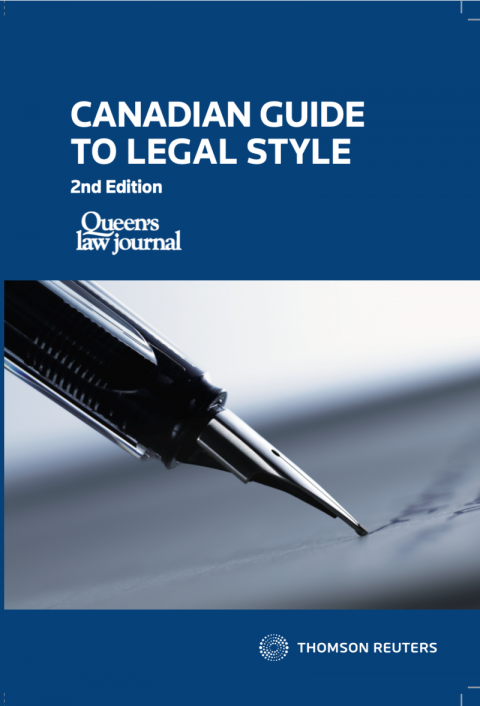
How should law students, journal editors, academics and practitioners in Canada distinguish among Justice, justice, Judge and judge in their writing? When should they use a hyphen instead of two types of dashes? These questions and more are laid out in a robust, user-friendly format in the second edition of the Canadian Guide to Legal Style published by the Queen’s Law Journal (QLJ).
The QLJ, a leading refereed scholarly publication produced by a student editorial board under the direction of a faculty advisor, made history in 2014 when it published the country’s first and only style guide for legal writing. In the new edition, some overall changes have been made to how the guide presents rules and examples.
“We tried to present general rules first, followed by examples and exceptions,” says Alex McPherson, Law’20, one of the guide’s two managing editors. “We reframed advice in the positive where possible.”
His co-managing editor, Sarah MacDonald, Law’20, adds, “We built on the first edition’s foundation to better reflect how the QLJ actually uses the guide. For example, we clarified the elements and presentation of different types of informational footnotes. We made these changes in response to successive boards’ comments on the first edition and to address what we felt were the most critical gaps.”
Since the first edition was published, each year’s Style Guide Committee members – QLJ editors-in-chief, Style Guide editors, other interested board members and volunteers – have researched and drafted new rules and suggested new avenues to explore.
“We went through the first edition rule-by-rule to incorporate changes suggested by previous committees over a period of several months,” says McPherson. “We learned there is always room for disagreement over the best way to write and, like many other areas in law school, solid research is key.”
It was the 2018-19 committee that consolidated and reviewed all the hard work put in by its predecessors. “We were grateful for the tireless assistance and encouragement of Nancy McCormack,” says MacDonald, referring to the professor and law librarian who died last July. “Without her, this guide would never have made it to a first edition, let alone a second.”
As for the proper way to denote a member of the judiciary and how to distinguish between usage of hyphens and dashes, here’s what MacDonald and McPherson have to say: “We provide both a robust and easily understandable section to determine how to refer to justices and judges properly, and clear rules and examples of how to use punctuation to your advantage when writing.”
To find out the guidelines for using these references and more in your legal writing, you can order a copy of the Canadian Guide to Legal Style (2nd edition) on the Thomson Reuters website.